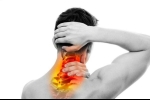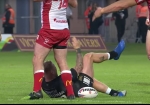Home » Blog
| Stem Cell, PRP, Acupuncture in Queens & Long Island, New York
Blog | Stem Cell, PRP, Acupuncture in Queens & Long Island, New York
When back pain won’t go away, your doctor will consider all the treatments that could help you, from exercise and physical therapy to medication. Part of that may include injections to ease your back pain and inflammation. These shots usually consist of a steroid and a numbing medicine. Keep in mind that while these shots help some people, not everyone gets the same relief.
Read more
You may get different answers to this question, depending on who you ask. It is true that herniated disc symptoms can subside over time even without medical intervention. But does that mean the herniated disc has healed on its own? As with so many things, the answer is incomplete. Yes, your symptoms may resolve, but this does not necessarily mean the herniated disc itself has healed.
Read more
Shoulder pain can develop from a variety of sources, such as tendonitis, arthritis, torn cartilage, and many other medical conditions and injuries. One other common cause of shoulder pain is a pinched nerve in the upper spine, also known as cervical radiculopathy. A nerve can become pinched when bone spurs form around the spinal discs. These discs are the “shock absorbers” between the vertebrae in your spine. Bone spurs are new formations of bone that grow when discs start to weaken with age.
Read more
People take or apply cannabidiol to treat a variety of symptoms, but their use is controversial. There is some confusion about what it is and how it affects the human body. Cannabidiol (CBD) may have some health benefits, and it may also pose risks. This article will explain what CBD is, its possible health benefits, how to use it, potential risks, and issues surrounding its legality in the United States. In June 2018, the country's Food and Drug Administration (FDA) approved the prescription use of Epidiolex, a purified form of CBD oil, for treating two types of epilepsy.
Read more
Spinal anatomy is a remarkably intricate structure of strong bones, flexible ligaments and tendons, extensive muscles, and highly sensitive nerves and nerve roots. We often don't think about their form and function, though, until they become a source of pain. Without question, the composition and function of the spine is a marvel of nature, providing us with a unique combination of:
1. Protection for the spinal cord and nerve roots to safely relay messages to and from the brain and the rest of the body. 2 Shock absorption, accepting jolts and stress as we move about 3 Flexibility, especially in the lower back and neck, allowing us to bend and twist in a full variety of movements 4. The strength provided by the bones, discs, joints, and supporting muscles and connective tissue that allows us to stand upright and move about with precision
Read more
Pain in the left arm - If your arm hurts, your first thought maybe that you injured your arm. Pain in one part of the body can sometimes originate elsewhere. Pain in your left arm could mean you have a bone or joint injury, a pinched nerve, or a problem with your heart. Read on to learn more about the causes of left arm pain and what symptoms could signal a serious problem.
Read more
Posted on: 16-Sep-2019 | No of views: 2013
Want to guard your joints against damage from RA? Keep them in good shape with some tweaks to your lifestyle. Diet, exercise, and using the right tools can make a huge difference. Lose Weight - If you carry extra pounds, be kind to your joints and shed a few. Added body weight puts more stress on your hips, knees, and feet. Those extra pounds can make it harder to keep your RA joint pain and symptoms under control. Stay Active - Regular exercise helps your joints work as they should, eases stiffness, and relieves fatigue. It strengthens the muscles that support your joints. An extra perk: It cuts your odds of heart disease, which often go along with RA.
Read more
When back pain is caused by a spinal disc problem, the source of the pain is either from a nerve being irritated by a protruding disc, or it is from the disc space itself. Differentiating between the two can cause confusion among patients, as doctors may use a variety of terms to describe the problem—such as a slipped disc, pinched nerve, and degenerated disc. To help clarify disc problems, on this site we focus on identifying the source of the pain as coming from either a pinched nerve or a degenerated disc.
Read more
Your knee is a complex joint that’s located between your upper and lower leg. Three bones meet at your knee: Femur (thighbone), Patella (kneecap), Tibia (shinbone). Various types of cartilage, ligaments, and tendons in your knee are vital for it to function correctly. A dislocated knee occurs when the position of the thighbone relative to the shinbone becomes disrupted at the knee joint. It can happen through trauma to your leg, like from falls, sports injuries, and car accidents.
Read more
Stay in Motion - It's the golden rule of joint health: The more you move, the less stiffness you'll have. Whether you're reading, working, or watching TV, change positions often. Take breaks from your desk or your chair and get active.
Safety First - Padding is your pal. So suit up when you do things like in-line skating or play contact sports. If your joints already ache, it might help to wear braces when you play tennis or golf.
Read more
Love this Post? Spread the World






















